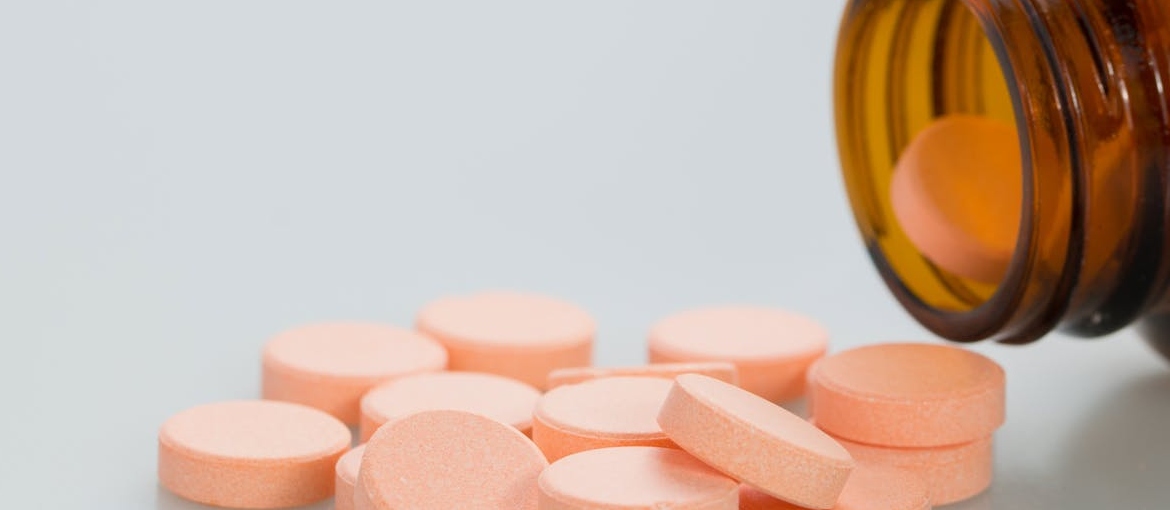MDMA and Ecstasy are two terms that are often used interchangeably, but they are not the same. MDMA (3,4-Methylenedioxy-methamphetamine) is the pure chemical compound, while Ecstasy refers to pills that may contain MDMA but are often mixed with other substances. Both are popular in recreational settings like music festivals and clubs, but misconceptions about their differences can lead to serious risks. Knowing the difference between MDMA and Ecstasy is important for understanding the dangers of unregulated substances and for harm reduction. If you or someone you know is struggling with substance use, exploring detox centers in WV can be a significant step toward recovery.
Are Ecstasy and MDMA the Same Thing?
The short answer is no. While the terms are often confused, they refer to different things:
- MDMA: This is a pure chemical compound. It is a synthetic drug that acts as both a stimulant and a hallucinogen. When taken, MDMA produces feelings of increased energy, emotional warmth, and sensory enhancement. MDMA is often associated with a predictable set of effects because it is a singular compound with no additives.
- Ecstasy: This is a street name for pills or tablets sold as MDMA. However, these pills often contain a mixture of other substances, such as methamphetamine, caffeine, or synthetic cathinones (commonly known as bath salts). These additives are used to cut costs, increase profits, or alter the drug’s effects, making Ecstasy far more unpredictable and potentially dangerous.

Why the Difference Matters
Understanding whether a substance is pure MDMA or mixed Ecstasy can make a significant difference in terms of safety. MDMA’s effects, while not without risks, are better understood in controlled settings. In contrast, Ecstasy carries heightened dangers due to the unknown substances it may contain. This uncertainty can lead to unexpected and harmful outcomes, highlighting the importance of awareness and safe practices.
Risks of Unregulated Ecstasy Pills
One of the biggest dangers of Ecstasy lies in its unpredictability. Unlike pure MDMA, which has consistent effects, Ecstasy pills vary widely in composition. Without regulation, there is no way to confirm what you are consuming. This increases the risks of:
- Overdose: Due to unknown ingredients and varying potency levels, the likelihood of accidental overdose is much higher with Ecstasy. A single pill could contain far more MDMA than expected or dangerous additives like fentanyl.
- Adverse reactions: Additives like methamphetamine or synthetic cathinones can cause extreme agitation, hallucinations, or paranoia. These reactions are often unpredictable and can lead to severe health consequences.
- Drug interactions: Mixing Ecstasy with alcohol or other substances can amplify its dangers. Some additives can react dangerously with medications or other drugs, leading to life-threatening situations.
- False sense of security: Many users assume that pills marketed as Ecstasy contain MDMA, but this is often not the case. This misconception can lead to risky behaviors, such as taking multiple pills or mixing substances.
Testing kits, which can detect the presence of MDMA and certain additives, can be an effective harm-reduction tool. However, they cannot identify all harmful substances, emphasizing the risks tied to unregulated use. Recognizing the difference between Ecstasy and MDMA can help individuals make safer choices and underline the value of treatment options like a stimulants rehab program.

What Class of Drug Is MDMA?
MDMA is classified as a Schedule I controlled substance in the United States. This means it is considered to have a high potential for abuse and no accepted medical use. Drugs in this category are heavily regulated and illegal to manufacture, possess, or distribute without special government approval. Despite this classification, MDMA’s psychoactive and hallucinogenic properties make it appealing to recreational users, particularly in social settings like clubs and festivals.
Some research studies have explored its potential therapeutic use in treating PTSD, but it remains illegal outside these limited contexts. For individuals using MDMA recreationally, understanding its classification can help highlight the importance of substance abuse treatment WV residents can trust when issues arise.
What Is the Fancy Name for Ecstasy?
Ecstasy is known by several street names, including Molly, X, E, Rolls, and Adam. “Molly” is often marketed as a pure form of MDMA, usually in powder or crystal form. However, studies show that Molly is frequently cut with other substances, making it just as unpredictable as Ecstasy pills.
Users often associate Molly with a safer or cleaner experience, but this assumption can be misleading and dangerous. Street names like these are often used to make the drug more appealing, especially to younger users. Recognizing these names and their risks can help individuals make informed choices and seek support through programs like opiate rehab West Virginia rehabs offer if needed.
What Is the Difference Between MDA and MDMA?
MDA (3,4-Methylenedioxyamphetamine) and MDMA are chemically similar but differ in their effects and duration. While both drugs belong to the same family, their impact on the user’s experience can vary significantly.
MDA
Here are some key differences between MDA and MDMA that can influence the overall experience:
- Longer-lasting effects: MDA tends to produce effects that can last longer than MDMA, often extending several hours beyond the typical MDMA experience.
- More intense hallucinations: MDA is known for its stronger hallucinogenic properties, which can make the experience more disorienting for users.
- Less emotional connectivity: Users of MDA often report feeling less emotionally connected compared to MDMA, which is why MDA is sometimes considered less suitable for social or therapeutic settings.
- Higher risk of overstimulation: The heightened sensory effects of MDA can lead to feelings of overstimulation, making the experience more physically and mentally taxing.

MDMA
Understanding what is the difference between MDA and MDMA can help users make informed decisions and avoid confusion about the unique effects and risks associated with each substance. If either substance use becomes problematic, seeking support through resources like a meth rehab center West Virginia offers can provide effective solutions. Here are some traits of MDMA:
- Euphoric and emotionally bonding: MDMA is widely used for its ability to enhance feelings of euphoria and emotional closeness, making it a popular choice in social settings.
- Shorter duration: The effects of MDMA are generally shorter, lasting around 3 to 6 hours, depending on dosage and individual factors.
- Widely studied for therapeutic use: MDMA has been the focus of research for its potential to assist therapy, particularly for conditions like PTSD. Its empathogenic qualities make it well-suited for such applications.
The Dangers of MDMA and Ecstasy Use
Both MDMA and Ecstasy carry significant risks, especially when used frequently or in unregulated forms. Knowing these risks is important for safety and prevention. These substances can affect physical and mental health, and repeated use often leads to serious consequences that extend beyond immediate side effects.
Short-Term Risks
MDMA and Ecstasy affect multiple systems in the body, which can result in a range of immediate side effects:
- Dehydration and overheating: MDMA can impair the body’s ability to regulate temperature, leading to dangerous overheating.
- Serotonin syndrome: Excessive serotonin release can cause confusion, agitation, rapid heart rate, and, in severe cases, seizures.
- Increased heart rate and blood pressure: These effects can lead to cardiovascular complications, especially for individuals with preexisting conditions.

Long-Term Effects and Addiction Potential
Individuals experiencing any of the issues we’ll go over may benefit from a cocaine addiction rehab or other specialized programs to address their needs. Such programs focus on tailored interventions and professional care to help individuals regain control and overcome dependency. Repeated MDMA or Ecstasy use can lead to long-term health problems, including:
- Neurotoxicity: Damage to serotonin neurons, which can affect mood, memory, and cognitive function.
- Mental health issues: Increased risk of anxiety, depression, and sleep disturbances.
- Dependency: While MDMA is not as addictive as substances like cocaine or opioids, some users develop compulsive patterns of use.
When to Seek Help for MDMA or Ecstasy Use
If you or a loved one is struggling with MDMA or Ecstasy use, it is important to recognize the signs that professional help may be needed. Many individuals avoid seeking assistance until their situation worsens, but early intervention can lead to better outcomes. Signs you may need help:
- Dependency patterns: Using the drug more frequently or in larger amounts than intended.
- Health deterioration: Experiencing noticeable changes in mood, memory, or overall physical health.
- Social and financial struggles: Drug use interfering with relationships, work, or finances.
- Inability to quit: Finding it difficult to stop using despite negative consequences.
Treatment Approaches
Overcoming MDMA or Ecstasy use often requires professional support. Each individual’s needs are unique, and a variety of treatment methods are available to support recovery and long-term wellness.
- Professional detox programs: Safely managing withdrawal symptoms under medical supervision. These programs help the body eliminate toxins while addressing physical discomfort in a controlled environment.
- Counseling and therapy: Evidence-based treatments, such as cognitive-behavioral therapy, help address the psychological factors behind substance use. Therapists guide individuals to understand their triggers and develop healthier coping mechanisms.
- Rehab centers: Comprehensive programs like drug rehab for young adults offer personalized support for individuals facing substance dependency. These centers provide structured environments that combine therapy, medical care, and peer support.
- Aftercare planning: Long-term recovery strategies to reduce the risk of relapse. Aftercare may include follow-up therapy, support groups, and regular check-ins to ensure sustained progress.

Ways to Reduce Risks
While abstinence is the safest approach, harm reduction strategies can also help minimize risks for those who choose to use them. These strategies provide practical tools to reduce harm while encouraging individuals to make informed decisions about their health.
Practical Harm Reduction Tips
Taking precautions can help reduce the risks associated with MDMA or Ecstasy use. Here are some ways to do that:
- Avoid mixing substances: Combining MDMA or Ecstasy with alcohol or other drugs increases the risk of adverse effects. This is especially dangerous because the interaction of substances can intensify side effects and lead to unpredictable outcomes.
- Use testing kits: Reagent kits can identify the presence of MDMA and detect certain harmful additives, offering some level of safety. However, they cannot guarantee purity or identify all possible contaminants.
- Stay hydrated: Drink water to avoid dehydration, but don’t overhydrate as this can lead to other health issues. Aim to sip water regularly rather than consuming large amounts at once.
- Take breaks: If you’re dancing or engaging in physical activity, take regular breaks to prevent overheating. Cool down in shaded or air-conditioned areas whenever possible.
Social and Behavioral Strategies
Planning ahead and setting boundaries can improve safety and decision-making in social settings. We’ll discuss how to implement these strategies:
- Set boundaries: Learn ways to refuse drugs to avoid peer pressure in social situations. Having clear and confident responses can make it easier to say no.
- Limit frequency: Space out usage to allow the body to recover and reduce the risk of dependency. Overusing MDMA can quickly deplete serotonin levels, leading to more pronounced side effects.
- Plan ahead: Ensure you have a safe environment and trusted people around you if you decide to use. Being with supportive friends can reduce the likelihood of risky behavior and assist in case of an emergency.

Navigating the Risks: Difference Between MDMA and Ecstasy Explained
Understanding the difference between MDMA and Ecstasy is important for making informed decisions about drug use and seeking help when needed. MDMA is a pure chemical compound, while Ecstasy often contains dangerous additives. Both substances pose risks, but treatment options at Harmony Ridge Recovery Center can offer hope and healing. For those struggling in West Virginia, various programs are available to support recovery and promote healthier futures. If you or someone you care about is facing challenges with MDMA or Ecstasy, don’t hesitate to reach out for help.
References:
https://pubmed.ncbi.nlm.nih.gov/28693371/
https://www.nature.com/articles/s41591-023-02565-4
https://pmc.ncbi.nlm.nih.gov/articles/PMC10845102/



